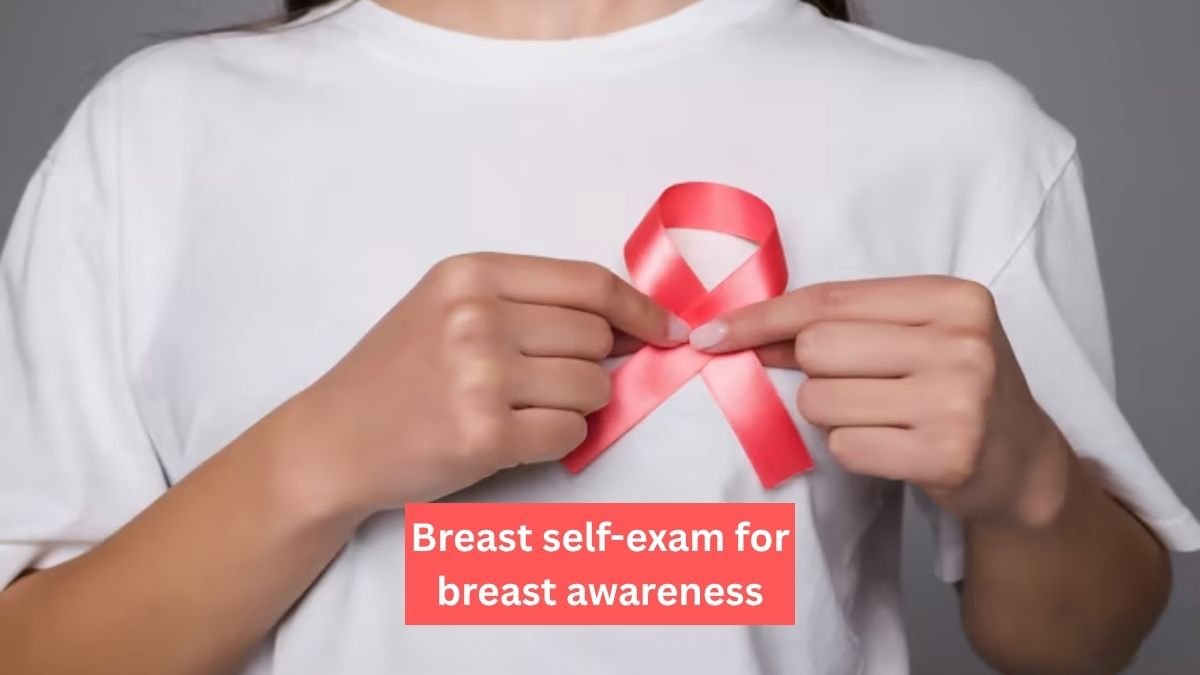A breast self‑exam for breast awareness is simply a way for you to check your own breasts at home using your eyes and hands. While experts don’t recommend relying on self‑exams for breast cancer screening, getting to know how your breasts normally look and feel can be incredibly helpful. That’s because if something changes, you’re more likely to spot it and mention it to your doctor sooner. And early detection of any issue could mean simpler, less invasive treatment.
Why Breast Self‑Awareness Matters
- Familiarity Builds Confidence
When you become attuned to your breasts’ usual texture, shape, and appearance, unusual changes stand out more clearly. That means issues like lumps, puckering, or discharge are easier to notice early. - It Complements Regular Screening
A self‑exam doesn’t replace mammograms or clinical checks, but it can add another layer of awareness. Sometimes imaging misses small lumps or areas that are hard to see, so having more opportunities to detect changes makes sense. - Empowerment Through Knowledge
Taking a few minutes each month to check in with your body helps build a sense of control and confidence over your own health. You become your own advocate.
What a Self‑Exam Can’t Do
It’s important to be realistic. Self‑exams aren’t a foolproof way to detect breast cancer or prevent deaths. Studies haven’t shown a definite link between self‑exams and reduced mortality. Plus, some people have dense or lumpy tissue that naturally feels uneven, which can complicate manual checks. However, many women report that they first noticed an unexpected lump themselves—so knowing your body truly does matter.
When to Reach Out to Your Doctor
If during a self‑exam you notice:
- A hard lump or knot, especially near your armpit
- A nipple that suddenly turns inward
- Any blood or unusual discharge from the nipple
- Skin changes—like dimpling, redness, swelling, warmth, or rashes
- Thickening or fullness that’s different from the rest of the breast
- Puckered skin, bulges, or ridges
- Persistent itchiness or sores around the breast
Don’t hesitate to contact your doctor—even if you’ve had a recent mammogram. Small changes are worth investigating right away, and your doctor may recommend a clinical breast exam, ultrasound, or diagnostic mammogram.
How to Prepare for a Self‑Exam
- Learn the Right Technique
Ask your doctor or nurse to demonstrate how to check properly. They can explain the best ways to feel accurately and thoroughly. - Pick the Best Time
If you’re still menstruating, aim to do your self‑exam within a week after your period ends. Hormonal changes may cause temporary lumps and tenderness that disappear once your cycle ends.
Step‑by‑Step Self‑Exam Guide
1. Look at Yourself
Stand or sit in front of a mirror without a bra.
- Compare both breasts for symmetry, shape, or size changes
- Raise your arms overhead or place hands on hips—check for dimpling or asymmetry
- Press to feel for any irregular contours or puckering around the breast or underarms
- If you have vision challenges, ask a trusted friend to help with visual inspection
2. Feel While Lying Down
- Lay flat to let the breast tissue spread out evenly
- Use the pads of your middle three fingers to press gently but firmly
- Use varying pressure: light (just below surface), medium (deeper in tissue), and firm (close to chest wall)
3. Feel While Showering
- Wet skin with soap and water to glide more easily
- Circle your fingers around the breast and underarm, applying different pressures
4. Follow a Pattern
- Cover the entire breast area systematically—imagine slicing a pie, starting near the collarbone and moving inward
- This ensures no area is overlooked
- Take your time; a full exam can take up to five minutes
What to Expect
- Normal Variations
Hormones, age, and natural tissue differences can cause lumps and firmness that are benign. - When Something Seems Off
If your exam reveals new knots, skin changes, or discharge that doesn’t resolve, even after your next cycle, it’s time to contact your healthcare provider.
Follow‑Up Care
Your provider may recommend:
- A clinical breast exam to check for abnormalities
- A diagnostic mammogram or breast ultrasound to get clearer images of suspicious areas
- A biopsy if tissue sampling is needed—though many lumps turn out to be benign
The Big Picture
Doing regular self‑exams or breast checks at home isn’t a replacement for professional screening, but it can help you detect issues earlier. Here’s a quick summary:
| Benefit | Limitation |
|---|---|
| Helps you notice changes early | May cause unnecessary anxiety |
| Supplements medical screenings | Doesn’t guarantee detection of cancer |
| Empowers proactive health | Might lead to tests for benign findings |
Final Thoughts
A breast self‑exam is a simple, private practice you can do at your own pace. By doing it regularly, in a relaxed and mindful way, you build a strong habit of self-awareness. If anything ever feels or looks different, you’re ready to get the support you need—before something becomes serious. And remember, early detection can make all the difference.
